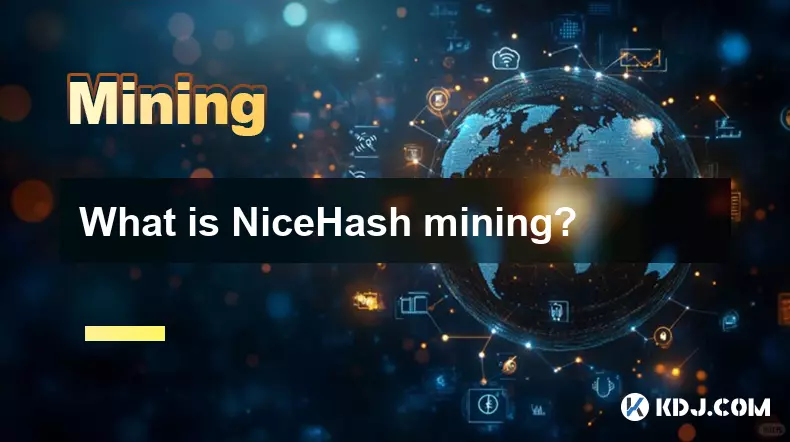-
 bitcoin
bitcoin $100977.009184 USD
-2.05% -
 ethereum
ethereum $3282.009150 USD
-3.23% -
 tether
tether $0.999813 USD
-0.02% -
 xrp
xrp $2.208254 USD
-4.89% -
 bnb
bnb $951.411089 USD
0.55% -
 solana
solana $155.761205 USD
-2.84% -
 usd-coin
usd-coin $1.000217 USD
0.02% -
 tron
tron $0.284475 USD
-1.28% -
 dogecoin
dogecoin $0.162363 USD
-1.53% -
 cardano
cardano $0.533988 USD
-0.47% -
 hyperliquid
hyperliquid $39.174339 USD
-3.22% -
 chainlink
chainlink $14.724828 USD
-1.16% -
 bitcoin-cash
bitcoin-cash $477.297986 USD
-1.28% -
 zcash
zcash $554.227426 USD
17.30% -
 ethena-usde
ethena-usde $0.998995 USD
-0.03%
How to create a flight sheet in HiveOS?
Flight sheets in HiveOS streamline mining management by allowing quick, consistent configuration across rigs with customizable settings for optimal performance.
Oct 27, 2025 at 09:00 am

Understanding Flight Sheets in HiveOS
1. A flight sheet in HiveOS is a configuration profile that defines how your mining rig operates. It includes settings such as the cryptocurrency to mine, pool addresses, worker names, power limits, and GPU or ASIC parameters. These sheets allow miners to quickly deploy consistent configurations across multiple rigs without manually adjusting each one.
2. HiveOS supports multiple flight sheets per rig, enabling users to switch between different mining strategies based on profitability, network conditions, or maintenance needs. For example, one sheet might be optimized for Ethereum mining while another targets Ravencoin with adjusted core clocks and memory tuning.
3. Flight sheets are especially useful when managing large-scale operations. Instead of logging into individual rigs, administrators can push updated sheets remotely through the HiveOS dashboard. This ensures consistency and reduces human error during configuration changes.
4. Each flight sheet stores detailed parameters including algorithm type, intensity levels, API monitoring ports, and custom launch commands. Miners can also assign tags to flight sheets for easier identification, such as 'low-power-mode' or 'high-performance-eth'.
Creating a New Flight Sheet Step by Step
1. Log in to your HiveOS account and navigate to the 'Flight Sheets' tab located in the main menu. Click the 'Create New' button to begin setting up a custom profile.
2. Assign a descriptive name to your flight sheet, such as 'Eco Mode – TON Mining'. Choose the appropriate miner software from the dropdown list—options include GMiner, T-Rex, NBMiner, or PhoenixMiner depending on the algorithm you're targeting.
3. Enter the pool connection details, including the stratum URL, port number, wallet address, and worker name format. Some miners support failover pools; these can be added under advanced settings to ensure continuity in case the primary server goes offline.
4. Configure hardware-specific parameters like GPU core clock, memory clock, voltage, and fan speed curves. These values vary depending on your rig's components and cooling environment. HiveOS allows real-time testing so adjustments can be validated before deployment.
5. Save the flight sheet and test it on a single rig before rolling it out fleet-wide. Monitor temperature, hashrate, and stability over several hours to confirm optimal performance.
Applying Flight Sheets to Rigs
1. Once created, flight sheets can be applied directly from the HiveOS dashboard. Select the target rig or group of rigs using checkboxes, then choose the desired flight sheet from the 'Apply Flight Sheet' dropdown.
2. The system will push the configuration instantly, restarting the miner process with the new settings. You can monitor the rollout status in real time via the activity log, which shows success or failure notifications for each affected rig.
3. HiveOS automatically backs up previous configurations before applying a new flight sheet, allowing quick rollback if instability occurs. This safeguard minimizes downtime and protects against misconfigurations.
4. For scheduled automation, use the built-in scheduler to apply specific flight sheets at certain times. This is helpful for switching to lower-power profiles during peak electricity rate hours.
Troubleshooting Common Flight Sheet Issues
1. If a rig fails to connect to the specified pool, verify that the stratum URL and port are correct. Typos in wallet addresses or incorrect protocols (wss:// vs stratum://) are frequent causes of failed connections.
2. Hashrate drops after applying a sheet may indicate unstable overclocks. Gradually reduce memory clock speeds or increase power limits until stability returns. Use stress-testing tools integrated within HiveOS to validate changes.
3. When a flight sheet does not appear in the selection menu, check user permissions and rig compatibility. Certain sheets are restricted to specific GPU models or miner versions.
4. Delays in configuration updates can occur due to poor internet connectivity on the rig side. Ensure all miners maintain stable communication with the HiveOS server by checking ping rates and firewall rules.
Frequently Asked Questions
Can I copy a flight sheet from one farm to another?Yes, HiveOS allows exporting flight sheets as JSON files. These can be imported into other farms, making it easy to replicate successful configurations across different locations.
What happens if a rig loses internet while running a flight sheet?The rig continues mining using the last active configuration. Once connectivity is restored, it syncs with HiveOS and applies any pending updates or new sheets.
Is it possible to schedule automatic switching between flight sheets?Yes, HiveOS includes a scheduling feature that lets users define exact dates and times for switching profiles. This works well for dynamic power management or shifting between day and night mining algorithms.
Do flight sheets support dual mining setups?Certain miners like T-Rex and GMiner support dual mining through flight sheets. Enable the dual mining option in the miner settings and input both primary and secondary coin parameters accordingly.
Disclaimer:info@kdj.com
The information provided is not trading advice. kdj.com does not assume any responsibility for any investments made based on the information provided in this article. Cryptocurrencies are highly volatile and it is highly recommended that you invest with caution after thorough research!
If you believe that the content used on this website infringes your copyright, please contact us immediately (info@kdj.com) and we will delete it promptly.
- Vande Mataram at 150: Stamps, Coins, and a Year-Long Celebration
- 2025-11-07 14:45:01
- Pi Network: Alignment, Not Just Speed, Is the Future of Crypto
- 2025-11-07 13:00:02
- Pi Network: Life Changes and a New Era Dawns for Crypto Pioneers
- 2025-11-07 13:00:02
- Bonhams Hong Kong: Rare Watches Echo Through Time
- 2025-11-07 12:35:01
- Unverified Apps, PiCoin, and a Costly Lesson: Navigating the Wild West of Crypto
- 2025-11-07 13:05:01
- Fed Governors, FOMC, and Interest Rates: Navigating the Shifting Landscape
- 2025-11-07 13:05:01
Related knowledge

What is the block reward in mining?
Nov 06,2025 at 12:35am
Understanding Block Rewards in Cryptocurrency Mining1. The block reward is the incentive miners receive for successfully validating and adding a new b...

How do mining algorithms work?
Nov 06,2025 at 04:59am
Mining Algorithms and Their Role in Blockchain Networks1. Mining algorithms serve as the backbone of blockchain consensus mechanisms, ensuring that tr...

What is NiceHash mining?
Nov 06,2025 at 07:40am
NiceHash mining refers to the process of renting out computational power to individuals or organizations seeking to mine cryptocurrencies without owni...

Does an antivirus program affect mining?
Nov 05,2025 at 09:29pm
Understanding Decentralized Exchanges in the Crypto Ecosystem1. Decentralized exchanges (DEXs) operate without a central authority, allowing users to ...

What is the history of Bitcoin mining?
Nov 05,2025 at 08:15pm
Within the fast-moving world of cryptocurrency, new developments emerge daily, reshaping how investors, developers, and institutions interact with dig...

How is the energy consumption of mining justified?
Nov 05,2025 at 10:20pm
Energy Consumption in Cryptocurrency Mining1. The energy consumption associated with cryptocurrency mining has drawn significant attention from enviro...

What is the block reward in mining?
Nov 06,2025 at 12:35am
Understanding Block Rewards in Cryptocurrency Mining1. The block reward is the incentive miners receive for successfully validating and adding a new b...

How do mining algorithms work?
Nov 06,2025 at 04:59am
Mining Algorithms and Their Role in Blockchain Networks1. Mining algorithms serve as the backbone of blockchain consensus mechanisms, ensuring that tr...

What is NiceHash mining?
Nov 06,2025 at 07:40am
NiceHash mining refers to the process of renting out computational power to individuals or organizations seeking to mine cryptocurrencies without owni...

Does an antivirus program affect mining?
Nov 05,2025 at 09:29pm
Understanding Decentralized Exchanges in the Crypto Ecosystem1. Decentralized exchanges (DEXs) operate without a central authority, allowing users to ...

What is the history of Bitcoin mining?
Nov 05,2025 at 08:15pm
Within the fast-moving world of cryptocurrency, new developments emerge daily, reshaping how investors, developers, and institutions interact with dig...

How is the energy consumption of mining justified?
Nov 05,2025 at 10:20pm
Energy Consumption in Cryptocurrency Mining1. The energy consumption associated with cryptocurrency mining has drawn significant attention from enviro...
See all articles










































































